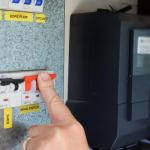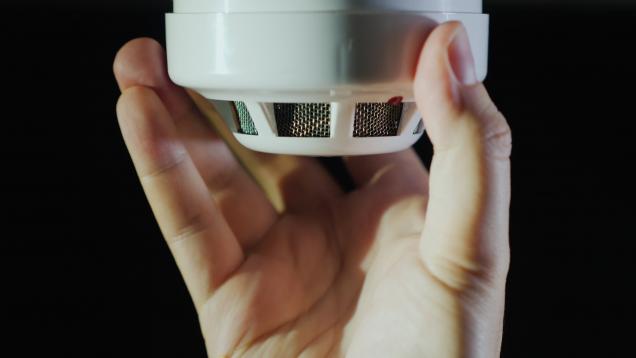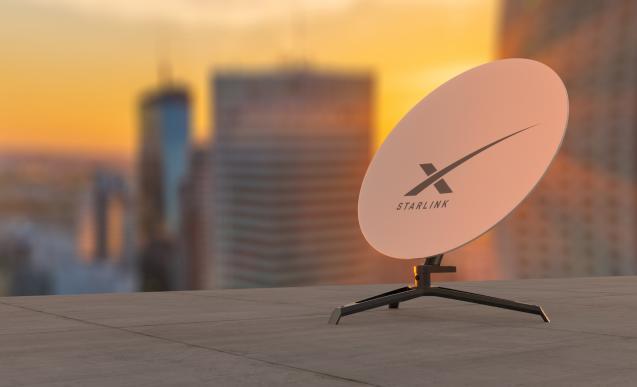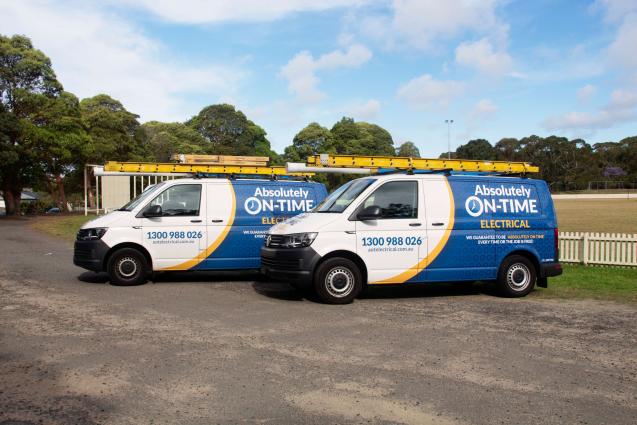
Everything You Need to Know About Safety Switches
By Absolutely On Time Electrical|October 31, 2022
By Australian law safety, switches must be installed in all homes built after 1991 as well as any home rewiring work done after this time as well. This is to protect people from electrical shocks and electrocution that could otherwise occur due to electrical faults.
So there is no confusion, safety switches are not the same as circuit breakers or surge protection devices. These two electrical protectors are designed to look after the wiring and appliances within your home from internal overloading (circuit breakers) and external power surges (surge protection).
Safety switches are far more important as they are designed to protect people from electric shocks and injury caused by live electricity that can be caught in your home wiring or appliances after they are turned off.
What does a safety switch do?
Sometimes excess heat during use can cause a charge to build up in appliances or wiring. This charge will still be present around the electrical device after it is turned off, with the current seeking a way to become grounded. Usually the only way for it to achieve this is to use a person as a conductor and travel through their body to the ground. Depending on the size of the electrical charge, you may only experience a small electrical shock, however, a stronger flow can result in serious burns, electrical shock that can stop the heart and electrocution that can be fatal. In the instance of faults caused by charging items (like mobile phones) fires have also been known to break out.
This is not especially common but can happen enough that you need to get protection. Safety switches are installed by a professional, licensed electrician in order to constantly monitor the electricity flow throughout your home circuits. If a fault is detected, power is instantly cut off to prevent personal injury, as well as damage that may be caused to your property.
Circuit breakers protect against current overloads but they are not sophisticated enough to know when excess electricity is running unchecked in your wiring. Safety switches have this exact purpose and are the only devices specifically designed to protect people from electric shock.
How does a safety switch work?
The safety switch has a residual current detector that constantly monitors the current passing through your wiring. Because electrical currents can move in both directions, safety switches are also designed to monitor energy flow in both directions too. What it’s looking for is a difference in the flow of electricity that would indicate that some power is missing. This is known as leaking energy that leads to a build up of residual energy.
If any electricity is missing this is considered an electrocution risk and the safety switch will trip, cutting power to prevent injury to the people inside the home. Leaking power cannot escape your wiring without an exit point, in most cases the only exit available is your hand when you go to switch off the appliance.
Safety switches are located at your powerbox or switchboard (in some cases both locations) to cover all your circuits and protect occupants from injury. You cannot install a safety switch yourself as the wiring is complex, working with switchboards is unsafe and you will not be covered by insurance if things go wrong. You can call a licensed electrician to help install and replace your safety switches.
Safety switches are incredibly fast-acting but it’s important to remember that electricity moves even faster. As well as having safety switches professionally installed and checked on a regular basis, be sure that you never use damaged or faulty appliances in your home and get your switches and wiring checked by an electrician if your property is older.
So there is no confusion, safety switches are not the same as circuit breakers or surge protection devices. These two electrical protectors are designed to look after the wiring and appliances within your home from internal overloading (circuit breakers) and external power surges (surge protection).
Safety switches are far more important as they are designed to protect people from electric shocks and injury caused by live electricity that can be caught in your home wiring or appliances after they are turned off.
What does a safety switch do?
Sometimes excess heat during use can cause a charge to build up in appliances or wiring. This charge will still be present around the electrical device after it is turned off, with the current seeking a way to become grounded. Usually the only way for it to achieve this is to use a person as a conductor and travel through their body to the ground. Depending on the size of the electrical charge, you may only experience a small electrical shock, however, a stronger flow can result in serious burns, electrical shock that can stop the heart and electrocution that can be fatal. In the instance of faults caused by charging items (like mobile phones) fires have also been known to break out.
This is not especially common but can happen enough that you need to get protection. Safety switches are installed by a professional, licensed electrician in order to constantly monitor the electricity flow throughout your home circuits. If a fault is detected, power is instantly cut off to prevent personal injury, as well as damage that may be caused to your property.
Circuit breakers protect against current overloads but they are not sophisticated enough to know when excess electricity is running unchecked in your wiring. Safety switches have this exact purpose and are the only devices specifically designed to protect people from electric shock.
How does a safety switch work?
The safety switch has a residual current detector that constantly monitors the current passing through your wiring. Because electrical currents can move in both directions, safety switches are also designed to monitor energy flow in both directions too. What it’s looking for is a difference in the flow of electricity that would indicate that some power is missing. This is known as leaking energy that leads to a build up of residual energy.
If any electricity is missing this is considered an electrocution risk and the safety switch will trip, cutting power to prevent injury to the people inside the home. Leaking power cannot escape your wiring without an exit point, in most cases the only exit available is your hand when you go to switch off the appliance.
Safety switches are located at your powerbox or switchboard (in some cases both locations) to cover all your circuits and protect occupants from injury. You cannot install a safety switch yourself as the wiring is complex, working with switchboards is unsafe and you will not be covered by insurance if things go wrong. You can call a licensed electrician to help install and replace your safety switches.
Safety switches are incredibly fast-acting but it’s important to remember that electricity moves even faster. As well as having safety switches professionally installed and checked on a regular basis, be sure that you never use damaged or faulty appliances in your home and get your switches and wiring checked by an electrician if your property is older.



